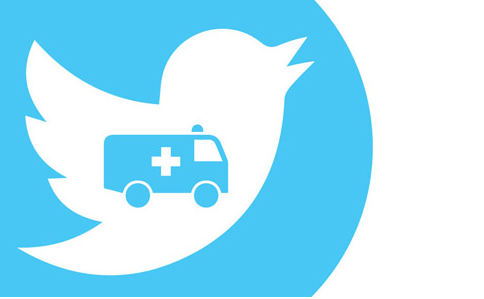 By Joe Wright
By Joe Wright
The latest press release from Virginia Tech University, posted in full below, uses a familiar sales pitch which asserts that the only way to keep the public safe is through pervasive surveillance.
Even amid the public outrage and pushback in the wake of the Snowden revelations, the establishment continues to push forward with justifications about why it is in our best interest to be under their constant watch.
Now, as Ebola has taken center stage as the latest threat to humanity, “ChatterGrabber” is being rolled out – a “machine-learning algorithm” that will theoretically help detect public health risks based on harvested communications. However, it goes far beyond the most extreme cases, and researchers are not hiding its wider applications. The press release is a must-read for its rare honesty, but here is the crux of the program:
ChatterGrabber has also been used to monitor tickborne diseases, such as Lyme disease, public sentiment involving vaccines, and gun violence and terrorism, serving as an early warning system for public health officials through suspicious tweets or conversations. (emphasis added)
Read on, it only gets worse:
Press release: “New social media surveillance tool vital to public health preparedness, researchers say”
A new social media surveillance tool may be the key to helping public health officials prepare for health epidemics or public crises like gun violence.
“ChatterGrabber” helps researchers use social media to identify potential health risks. Researchers seeking specific symptoms or key phrases at specific locations can harvest tweets and use the information gathered to understand whether they have an epidemic or potentially threatening situation on their hands, and alert public health officials to take any necessary action.
The software was designed by computational epidemiologist James Schlitt, under the auspices of a Modeling Infectious Disease Agent Study grant overseen by Stephen Eubank, deputy director of the Network Dynamics and Simulation Science Laboratory at The Virginia Tech Virginia Bioinformatics Institute.
Currently, the software is proving useful for a variety of applications, including EpiDash, a platform developed by Virginia Tech graduate research assistants Elizabeth Musser and Harshal Hayatnagarkar to monitor norovirus outbreaks.
Machine-learning algorithms help EpiDash screen social networks for statements of interest involving gastric illness. A dashboard helps public health officials in detecting disease, thus allowing them to mobilize when outbreaks occur.
“As a field epidemiologist, I found EpiDash to be instrumental in providing timely information about local disease issues as it adapts the speed and flexibility of social networking to disease surveillance,” said Paige Bordwine, a district epidemiologist for the New River Health District of the Virginia Department of Health.
 ChatterGrabber has also been used to monitor tickborne diseases, such as Lyme disease, public sentiment involving vaccines, and gun violence and terrorism, serving as an early warning system for public health officials through suspicious tweets or conversations.
ChatterGrabber has also been used to monitor tickborne diseases, such as Lyme disease, public sentiment involving vaccines, and gun violence and terrorism, serving as an early warning system for public health officials through suspicious tweets or conversations.
“I find the potential of this as a real-time life safety information-sharing application almost limitless and look forward to implementing it in our jurisdiction,” said John O’Shea, chief of the Blacksburg Volunteer Rescue Squad.
ChatterGrabber is unique in that it allows researchers to use public information made easily accessible through social media sites. Platforms like Twitter serve as a rich data source for researchers and public health officials.
Future versions of ChatterGrabber will feature interactive visualization via the EpiDash system and an enhanced partner interface, allowing users to adapt ChatterGrabber to their local dialect and public health conditions. Epidemiologists will also be able to customize the software to search for particular disease symptoms, and a version of the system is also being developed for 911 emergencies, including weather surveillance.
“ChatterGrabber and EpiDash are great examples of Virginia Tech’s motto ‘Ut Prosim’ in action,” said Eubank. “We are designing and building surveillance systems based on individual behavior to better inform preparedness services.”
Funding for ChatterGrabber was supported by the National Institutes of General Medical Sciences of the National Institutes of Health under award number 5U01GM070694-11. The content is solely the responsibility of the authors and does not necessarily represent the official views of the National Institutes of Health
A university-level Research Institute of Virginia Tech, the Virginia Bioinformatics Institute was established in 2000 with an emphasis on informatics of complex interacting systems scaling the microbiome to the entire globe. It helps solve challenges posed to human health, security, and sustainability. Headquartered at the Blacksburg campus, the institute occupies 154,600 square feet in research facilities, including state-of-the-art core laboratory and high-performance computing facilities, as well as research offices in the Virginia Tech Research Center in Arlington, Virginia.
Source: http://www.vtnews.vt.edu/articles/2014/08/082514-vbi-chattergrabber.html
Recently by Joe Wright:
- Police Brutality Continues Unchecked Across The Nation: Report
- Human Rights Court Condemns Poland for CIA Torture Black Site
- Citizen Journalism is Winning the News War in Syria


how does it violate “privacy” when it surveils information people put in PUBLIC fora???